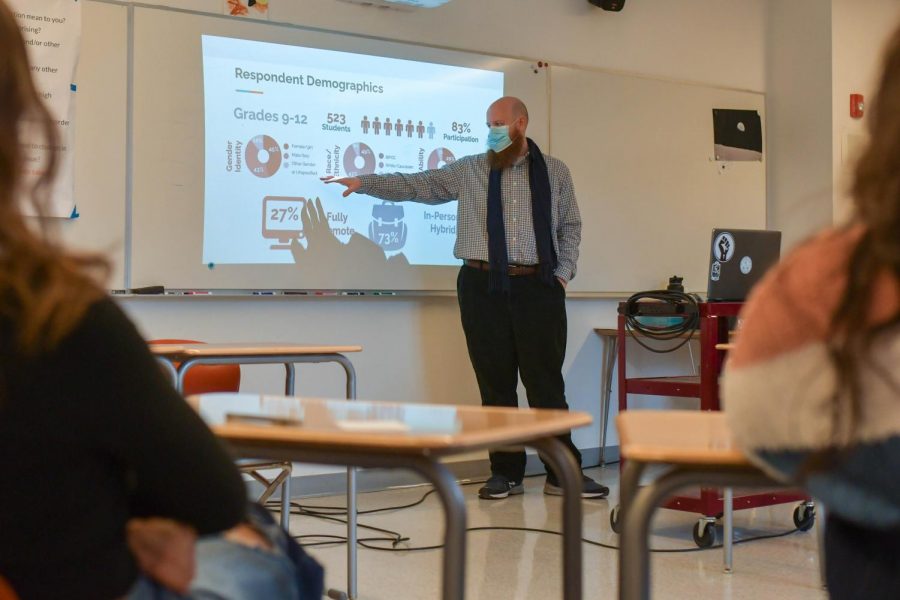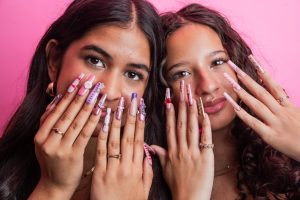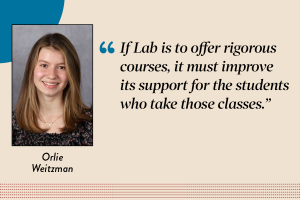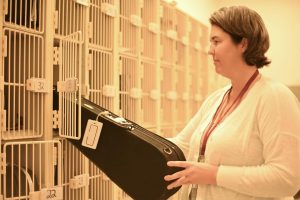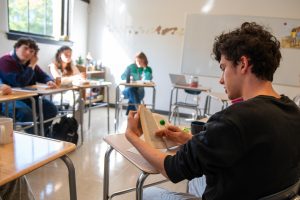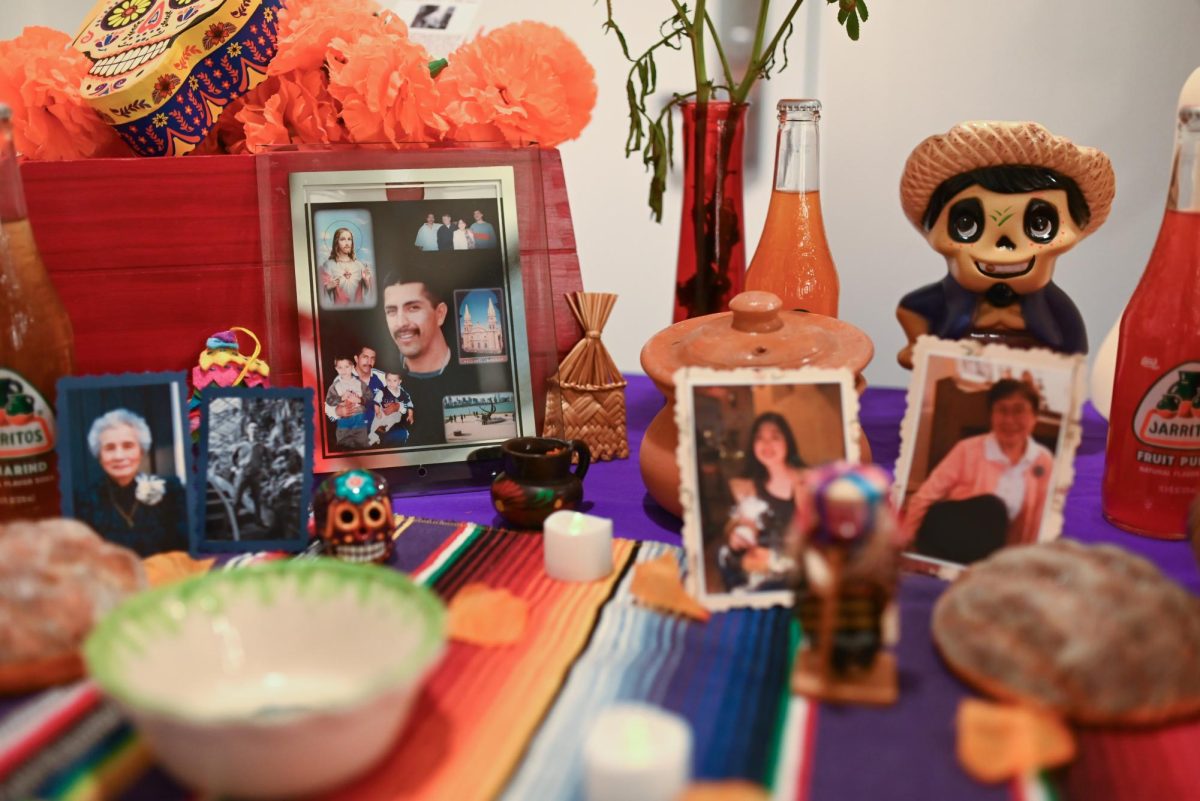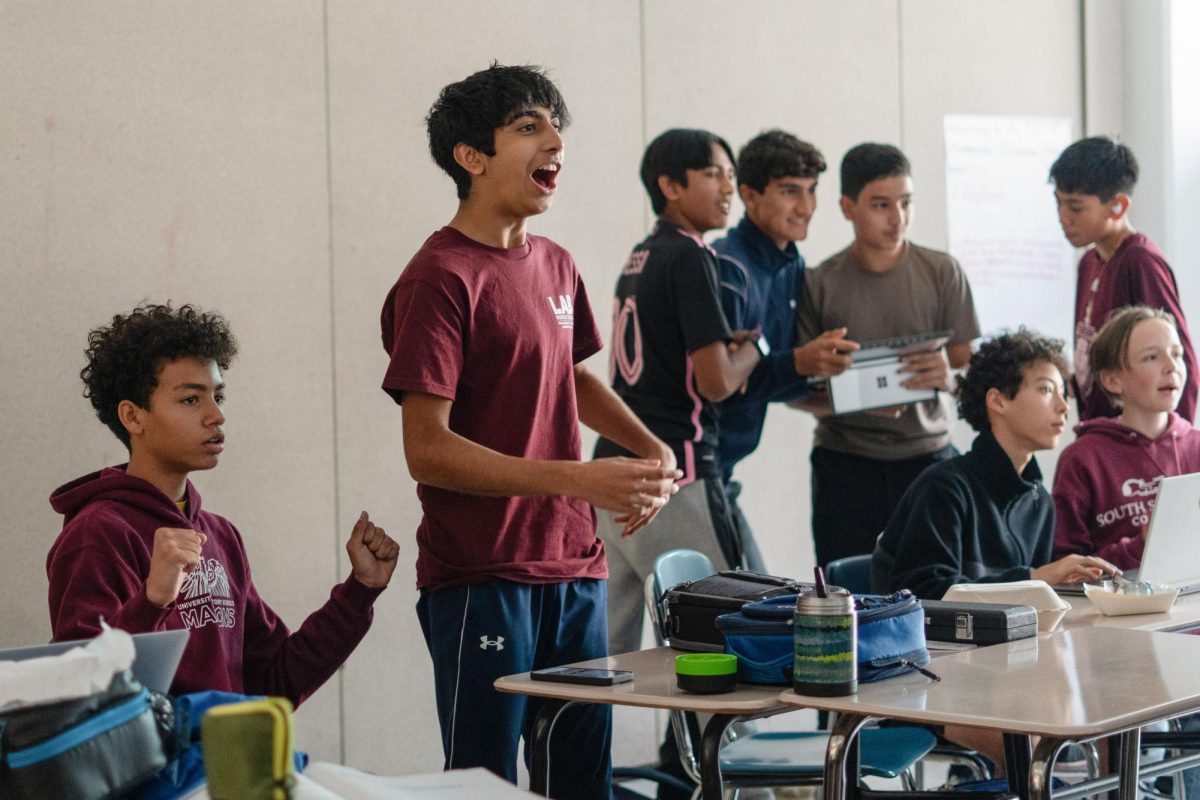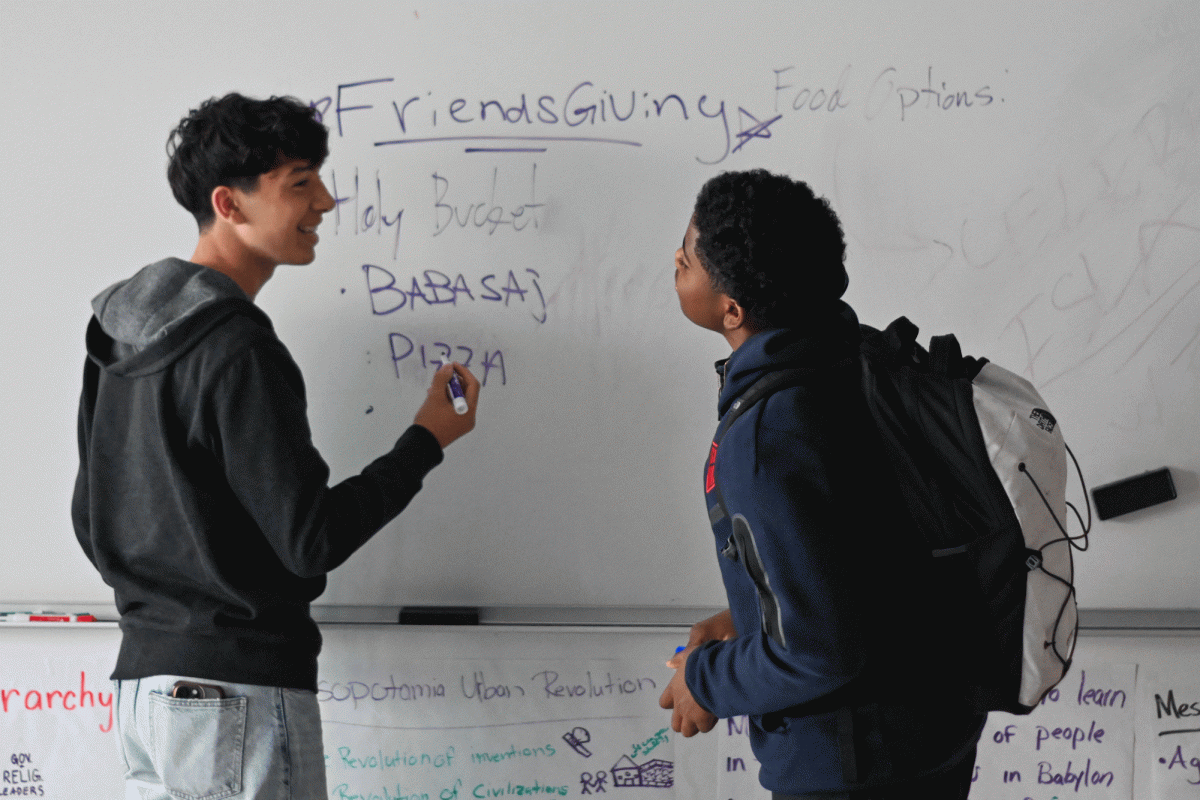Wellness survey reveals areas of concern
Counselor Michael Bruner points to survey results during the health and wellness assembly held Dec. 9. While several data points were similar to 2020, the results revealed an increase in girls feeling “really ugly” and a decrease in students seeking counselors.
December 15, 2021
Four of 10 U-High students don’t feel comfortable asking for help when stressed, worried or upset. 53% of girls felt happy with who they were, a 9% drop from 62% in 2020.
These concerning statistics are just some of the results revealed in the high school portion of the 2021 Health and Wellness Survey, which was announced Nov. 17 accompanied by a series of infographics.
The survey was conducted in March, with 83% participation among students in grades 9-12. When students took the survey, 73% had moved into hybrid learning, while 27% participated in distance learning.
Given how school was experienced differently relative to 2020, counselor Aria Choi was surprised to see how the responses were still similar to how they were when students were in-person.
Wellness and Title IX Coordinator Betsy Noel oversaw the survey and said there were some expected results, such as struggling connecting and more feelings of sadness and loneliness.
“Even though that was expected, that was really sad,” Ms. Noel said. “I was glad to see that there was no negative change in confidence in my ability to cope with stress. We want to see those numbers higher in general, but that those numbers didn’t go down is good.”
While results for students’ ability to cope with stress remained relatively consistent from 2020 to 2021, the number of individuals who identified as female and felt “really ugly” rose by 10%, compared to 2020 results. Ms. Noel attributed this increase to social media.
“Given how much time people spent on social media last year vs. face-to-face interactions, I do wonder how much of it has to do with that,” Ms. Noel said.
Noting that girls’ self-confidence begins to decline at a young age, Ms. Noel said the lower school is trying to raise positive feelings of self-confidence through a focus on gender identity and creating opportunities for girls to feel empowered.
There was also an 8% decrease in students who sought counselors as trusted adults. Ms. Choi said she is curious where this 8% difference is allocated and whether students found different sources for support. Responses also showed a decrease in seeking a teacher or adviser but a slight increase in seeking a parent.
“I don’t view that as losing 8% of our student body who turn to us,” Ms. Choi said, “I see that and wonder who the folks are that they are comfortable turning to and bottom line what I care about is that students have a trusted peer to turn to, and if it’s not me, I’m OK with that.”
The survey also revealed a lack of welcomeness based on gender and race, with 63% of nonbinary students and 21% of Black, Indigenous and other people of color expressing they felt “welcome half the time or unwelcome.” Only 3% of white students said the same.
“Regardless of if there are more people who feel unwelcome or fewer people who feel unwelcome, the presence of people feeling unwelcome should be justification for looking into certain ways that we can make people feel welcome,” All-School President Brent Pennington said.
This year, the wellness survey had a new category, “Top Sources of Stress,” in which 75% of students reported they were stressed with school work, followed by 57% of students feeling stressed by local, national or world events.
“We thought it was important when drafting the survey in the fall of 2020 that we recognize that in particular that year, national events were having a significant impact in people’s lives in a way that it may not have in the past,” Ms. Noel said. “I think it is a question we should have asked previously, but given that we all got hit so hard last year it seemed obvious it needed to be included at that point.”
Grade-level assemblies have been held to debrief the results and focus on peer-level interactions. At the end of each assembly, students filled out notecards for feedback on what peers can do to improve the overall wellness of the community.
“We are also exploring getting a new vendor for next year who can present the results even more dynamically, so we can sort them even better based on identity,” Ms. Noel said.
Ms. Noel hopes students can take action after reading the results, which can be found on the new Lab wellness website.
Ms. Noel said, “I hope students look at these results and where they see problems or concerns that they think about their own behavior and about ways they can support each other or have a positive impact.”



